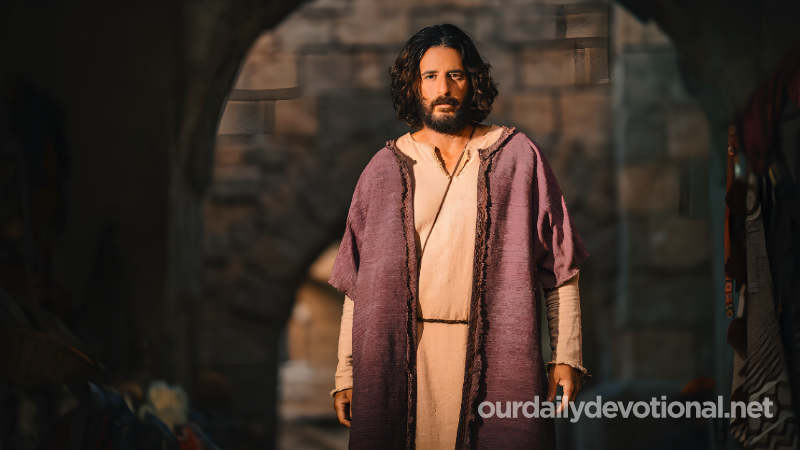(Gr. «'loannes», from the Heb. «Yõhãnãn»: «Jehovah has given favor»). Son of Zebedee, brother of James who suffered martyrdom under the power of Herod Agrippa I (Mt. 4:21; Acts 12:12).
It is rightly assumed that John was the youngest, that their mother was called Salome, and that she was the sister of Jesus' mother (see JAMES). Juan's father owned fishing boats; His two sons and several laborers worked for him in his fishing business on the Lake of Galilee (Mark 1:19-20).
John had followed the teachings of the Baptist on board the Jordan; contemplating Jesus, he had designated him as the Lamb of God, in the presence of Andrew and an anonymous disciple who, evidently, was John (John 1: 35-40).
He accompanied Jesus to Galilee and was with him at the wedding at Cana (John 2:1-11), but he had not yet been called to follow the Lord in a permanent way. He resumed his activity on the lake; John and his brother sometimes worked with Peter (Lk. 5:10).
Jesus invited James and John to leave his business and follow him (Matt. 4:21, 22; Mark 1:19, 20). He later designated them as apostles (Mt. 10:2).
Jesus nicknamed them Boanerges, "sons of thunder" (Mark 3:17), undoubtedly because of their violent character. The impetuosity of their natural temperament, not yet transformed by grace, was manifested when John rebuked a man who cast out demons in the name of Christ, but was not part of the group of disciples (Lk. 9:49).
The same violence was evident when the two brothers wanted to call down fire from heaven on a city of the Samaritans whose inhabitants had refused to welcome their teacher (Lk. 9:52-56).
The selfishness of James and John led them to join their requests with those of their mother, who wanted her children to have the first places next to Jesus in the coming kingdom.
At the same time, they expressed their zeal by declaring themselves willing to face death for Christ (Mt. 20:20-24; Mark 10:35-41). But grace triumphed over these defects, and their violence was transformed into a gloriously shaped force.
John is characterized by a deep spiritual intuition and a lively sensitivity, and he was a disciple for whom Jesus felt a particular affection.
He was one of the three apostles whom Jesus allowed to see the resurrection of Jairus' daughter (Mark 5:37; Luke 8:51), to contemplate the transfiguration (Mt. 17:1; Mr. 9:2; Luke 9:28), and the agony of the Garden of Gethsemane (Mt. 26:37; Mr. 14:33).
During the Last Supper, he had been closest to Jesus (John 13:23). From Gethsemane, he followed Jesus into the high priest's residence, where he was known; Later, he attended the crucifixion.
From the top of the cross, Jesus entrusted her mother to John, who took her with him (John 18:15; 19:27). When he was informed that Christ's tomb was empty, John ran with Peter to the tomb, and confirmed that the Lord was truly alive (John 20: 1-10).
On the afternoon of the same day, in the company of the other disciples, he saw the Risen One, who appeared to them again a week later (Lk. 24: 33-43; Jn. 20: 19-20; 1 Cor. 15: 5).
John went with the other disciples to Galilee, where Jesus had summoned them, and there he saw the Lord again (Mt. 26:32; 28:10, 16; Jn. 21: 1-7). While John was in Galilee, the idea spread among the disciples (who had misinterpreted some of Jesus' words) that John would not die (John 21:22).
After the Ascension, he stayed for a time with the other ten disciples in an upper room in Jerusalem (Acts 1:13). On the day after Pentecost, he joins Peter in a great missionary work (Acts 3:1).
The two were imprisoned by the Jewish authorities, and boldly confessed their faith (Acts 4:19). The other apostles sent Peter and John to Samaria to help Philip, who had begun to preach the Gospel there (Acts 8:14).
John was one of the apostles who stayed in Jerusalem during the persecutions that were launched against the first Christians. As a pillar of the Church, he was still there when Paul came after his first missionary journey (Acts 15:6; Gal. 2:9).
Five books of the NT are attributed to him, the fourth Gospel, three epistles and the Apocalypse, whose title mentions the name of John, the author of it. Tradition says that his ministry ended in Ephesus. It is likely that John took care of the seven churches of Asia (Rev. 1:11).
When he wrote the Apocalypse, undoubtedly around the year 95 AD, the apostle was in exile on the island of Patmos, because of the Word of God and the testimony that he had given of Jesus Christ (Rev. 1: 9). The accession of Nerva in the year 96 brought him freedom and he was able to return to Ephesus, it is said.
Polycarp, Papias and Ignatius followed his teachings. Irenaeus, a disciple of Polycarp, states that John remained in Ephesus until his death, which occurred under Trajan, who reigned from 98 to 117.
Meaning of JOHN (Apostle)
(Gr. «'loannes», from the Heb. «Yõhãnãn»: «Jehovah has given favor»). Son of Zebedee, brother of James who suffered martyrdom under the power of Herod Agrippa I (Mt. 4:21; Acts 12:12).







